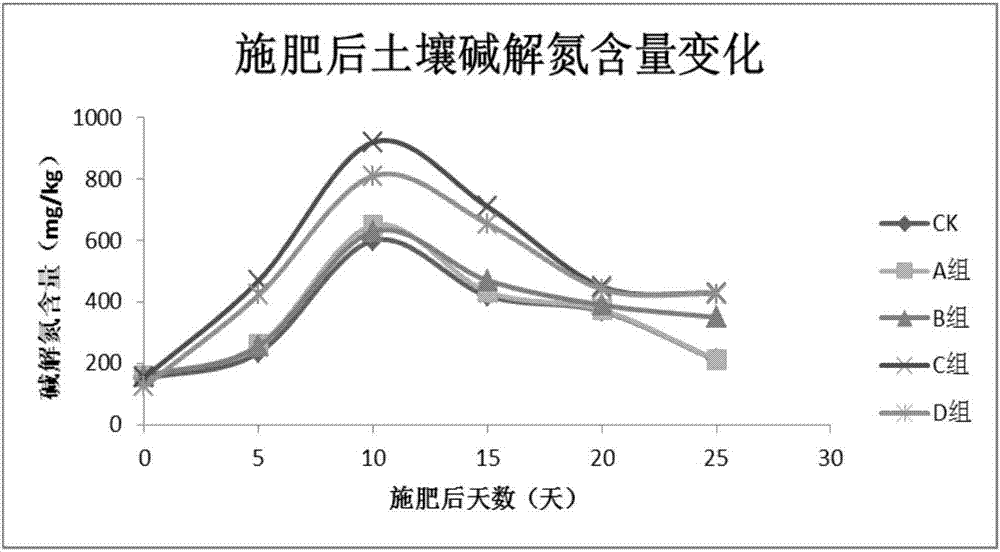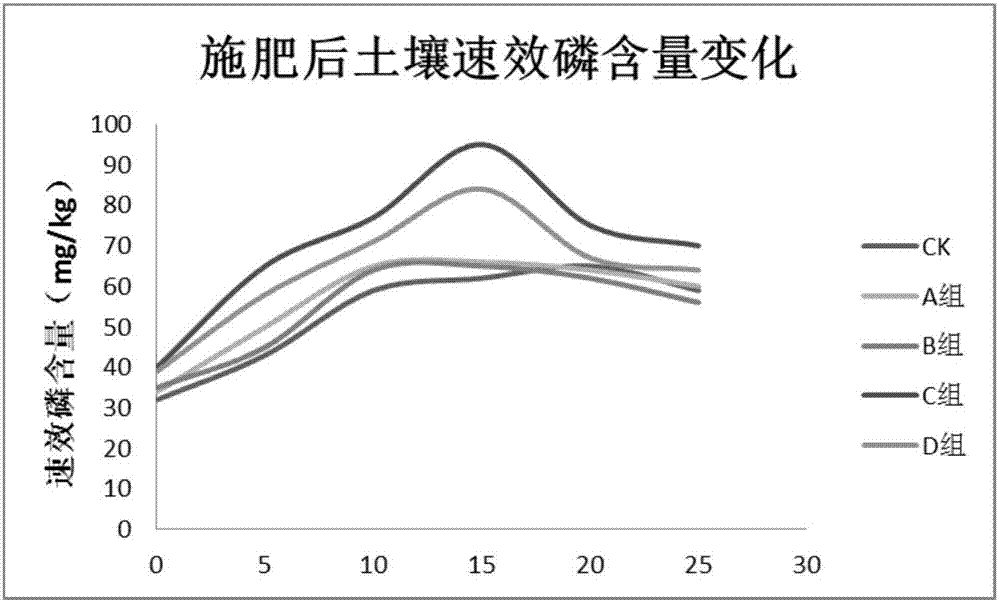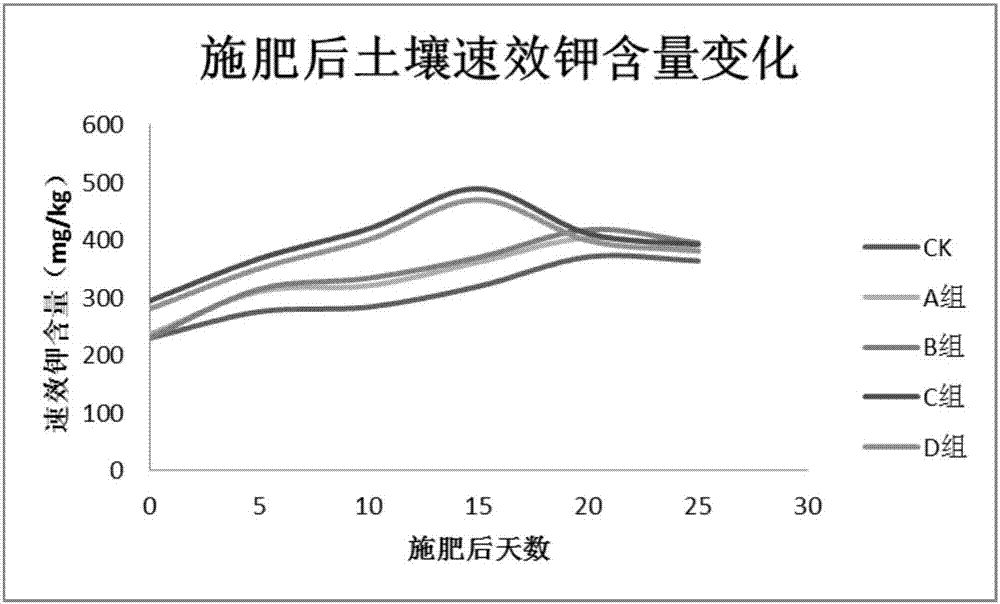Soil nitrogen regulation method after straw turnover
A compound bacterial agent, Aspergillus oryzae technology, applied in soil conditioning materials, microorganism-based methods, chemical instruments and methods, etc., can solve problems such as unsatisfactory effects, differences in decomposition speed and decomposition efficiency, etc.
- Summary
- Abstract
- Description
- Claims
- Application Information
AI Technical Summary
Problems solved by technology
Method used
Image
Examples
Embodiment 1
[0040] The optimization and detection of embodiment 1 compound bacterial agent
[0041] 1.1 Preparation of compound bacterial agent
[0042] Types of bacteria
The proportion of bacteria (mass ratio)
Trichoderma Reesei
10-20%
Aspergillus oryzae
3-15%
5-20%
White rot fungus (Phanerochaete Chrysosprium)
10-20%
15-20%
Clostridium cellulovorans
10-20%
Sporocytophaga
3-10%
10-20%
5-15%
5-15%
Paenibacillus polymyxa
5-10%
Rhizobium meliloti (Sinorhizobium meliloti)
5-10%
[0043] The total effective number of viable bacteria of the above-mentioned composite bacterial agents is 1-2×10 8 individual / mL.
[0044] The above-mentioned composite microbial agent contains bacteria, fungi and actinomycetes, which overcomes the problem of limited ability of a single microorganism t...
Embodiment 3
[0051] Example 3 Effect of Straw Returning on Soil Fertility Using Composite Bacteria Agent
[0052] In 2014, my country's corn planting area has reached 3.5 million hectares. The impact of repeated cropping of corn on yield is small, and repeated cropping is common. Therefore, the corn system is taken as the research object to determine the impact of compound bacterial agents on soil fertility after corn stalks are returned to the field, and the impact on corn stalks. The effect of fertilization after planting.
[0053] 3.1 Test grouping
[0054] There were 5 treatments in the field experiment, and each treatment was repeated 3 times. The way of straw returning to the field is straw crushing and returning to the field. The traditional fertilization without straw returning was set as the control group (CK group), and the other 4 groups included: simple corn straw returning group + traditional fertilization group (group A), traditional fertilization group + corn compound bacte...
Embodiment 4
[0067] Example 4 Effect of Straw Returning on Crop Yield Using Composite Bacteria
[0068] Corn stalks were planted experimentally in field plots. The control group was corn stalks not returned to the field and chemical fertilizers were applied. Experimental group 1 was corn stalks returned to the field with chemical fertilizers. For corn stalks returning to the field and compound bacterial agent, 30% reduced chemical fertilizers were applied, and each group had 3 replicates. Each group of corn was harvested individually, and the actual yield was measured.
[0069] The results showed that compared with the control group without returning straw to the field, the corn yield of the corn straw returning combined with chemical fertilizer treatment group increased by nearly 4%, and the corn yield of the corn straw returning plus compound bacterial agent combined with chemical fertilizer group increased by nearly 22% , corn stalks returned to the field and compound bacterial agent c...
PUM
 Login to View More
Login to View More Abstract
Description
Claims
Application Information
 Login to View More
Login to View More - R&D
- Intellectual Property
- Life Sciences
- Materials
- Tech Scout
- Unparalleled Data Quality
- Higher Quality Content
- 60% Fewer Hallucinations
Browse by: Latest US Patents, China's latest patents, Technical Efficacy Thesaurus, Application Domain, Technology Topic, Popular Technical Reports.
© 2025 PatSnap. All rights reserved.Legal|Privacy policy|Modern Slavery Act Transparency Statement|Sitemap|About US| Contact US: help@patsnap.com



